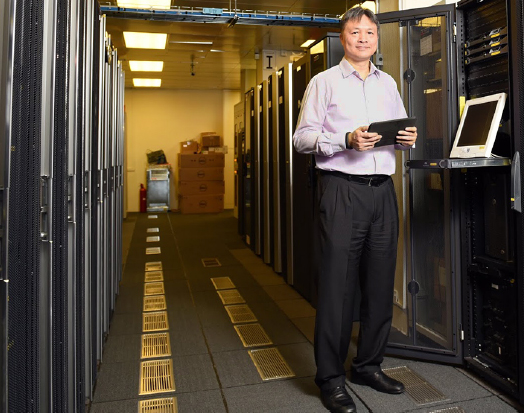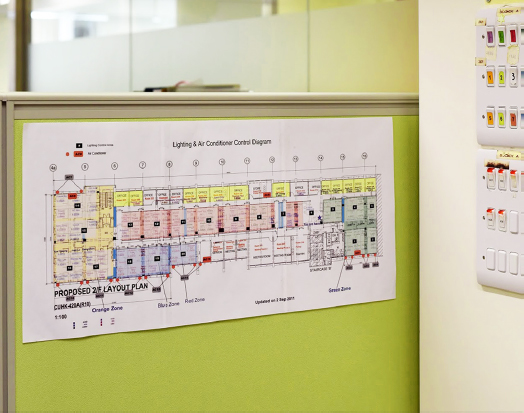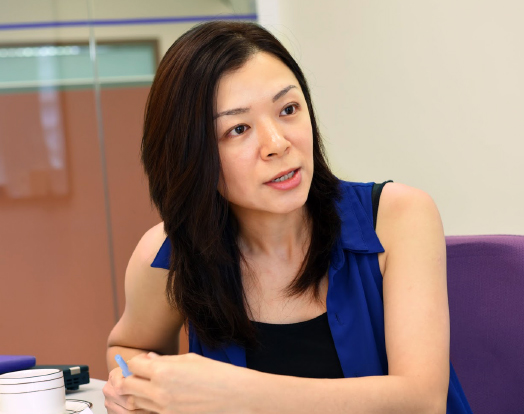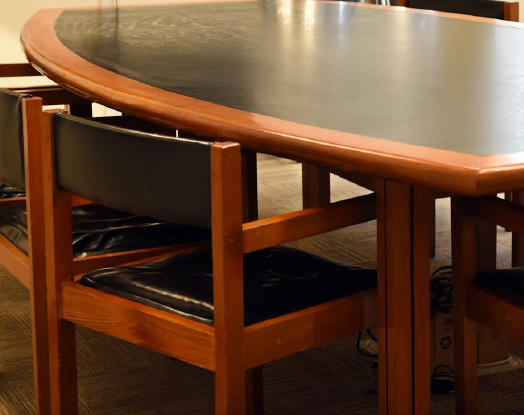ITSC on 27°C and More
The Information Technology Services Centre (ITSC) was a winner of CUHK's Go! Green Award. We spoke to Ms. Lily Tsai and Mr. Cheng Che-hoo of the ITSC about the centre's winning and more.

1. One of the most impressive things the ITSC has done is raising the temperature of the central data centre to 27°C. How did you arrive at that temperature?
Cheng: We discussed at length with the Estates Management Office on how to lower our energy consumption, and they gave us recommendations. The central data centre temperature of 27°C was arrived at after yearlong trial and error. When servers are overly heated, they send out alarms. What we did was we kept adjusting the temperature upwards until we reached the highest temperature without alarms going off, and found the average temperature of 27°C to be the highest we could go without doing harm to the servers. Data centres are cooled by CRAC units or computer room air-conditioning units. We now have a practice that when the outdoor temperature is 15°C, we turn off one CRAC unit; when it drops to 10°C, two, and so on. We've also blocked all the windows in the central data centre to reduce heat dissipation from outside and keep the indoor temperature lower.
2. Will the new Central Data Centre in the Wu Ho Man Yuen Building be even more energy-efficient?
Cheng: The new Central Data Centre, targeted for production use by users starting mid-2016, can house up to 240 server racks, double the volume of the current centre in the Pi Chiu Building. It will also be more energy-efficient, because we started from zero when building it. The CRAC units there will be water-cooled as opposed to air-cooled like the ones in the current centre. Water-cooled CRAC units are generally more energy-efficient than their air-cooled counterparts. The new centre will also have a raised floor system with a height of 60cm (roughly two feet), compared to 11 inches in the current centre. In the current centre, data cables and cold air from the CRAC units go under the floor. If there are too many cables, air-flow is obstructed which wastes energy. In the new centre, all data cables run overhead, hence no obstruction to air-flow under the floor.
The new data centre also makes use of a cold/hot aisle design to separate hot air generated by the servers from cold air going into the servers. This allows the overall temperature inside the centre to be maintained at an ideal level and energy efficiency to be optimized.

We have also been doing all we can to upgrade the old data centre to make it more energy-efficient, despite structural constraints. For example, we have, over the course of over three years, extracted and discarded old cables of over 20 years or more. We also ensure that all new cables run overhead rather than under the raised floor system.

3. How does the ITSC help University departments become more energy-efficient?
Cheng: Besides supporting and maintaining the University's central computing systems, the ITSC offers a virtual machine (VM) service. Server virtualization refers to the creation of a virtual machine that acts like a real server running with an operating system. Traditionally, many CUHK departments and units have their own servers, but we are encouraging them to give up physical servers placed in their vicinity for a virtual machine service offered by the ITSC. Rather than investing in a physical server, departments and units, especially those with smaller budgets, can now hire a virtual server, which shares a physical server with other virtual servers, and brings about economies of scale.
In addition, we will launch an e-fax service after the summer holidays. The ITSC and some University units have been using e-fax for over a year now. e-Fax does away with fax machines, paper and toner. All you need is an e-fax account and you can send and forward faxes as you do email.
4. What other major green actions did the ITSC take that led to the winning of the award?
Tsai: To name a few, reusing and recycling computer hardware parts, de-lamping, installing fans to improve air circulation in offices, installing insect screens so windows can be open for extended periods of time to decrease reliance on air-conditioners in offices and user areas, installing timers for printers and water heaters, and motion sensors for lights. In addition to that, office lights and air-conditioners are divided into zones so staff can turn them off by zone when leaving for the day. And of course we have been recycling paper, batteries and plastic for over 10 years. All our meetings are now paperless. We try to reuse furniture as much as possible. We also design applications and document management systems to help ourselves and other CUHK units use less paper.
5. The ITSC is a large department. How could you get all the staff to cooperate?
Tsai: We have about 160 staff with whom we communicate green practices via email, for example, reminding them to turn off lights, air-conditioning, and computers after work. We also post reminders at exits and entrances.
6. What gave ITSC the greatest sense of achievement?
Tsai: To be able to contribute to the saving of energy and other resources at the Chinese University and in Hong Kong; to help instil environmental concepts in the minds of staff leading to behavioural change. We have noticed that our staff voluntarily power off lights, air-conditioning, and computers when they leave their offices. They bring their tablets to meetings, rather than pen and paper. We hope to introduce these practices to other University units.



